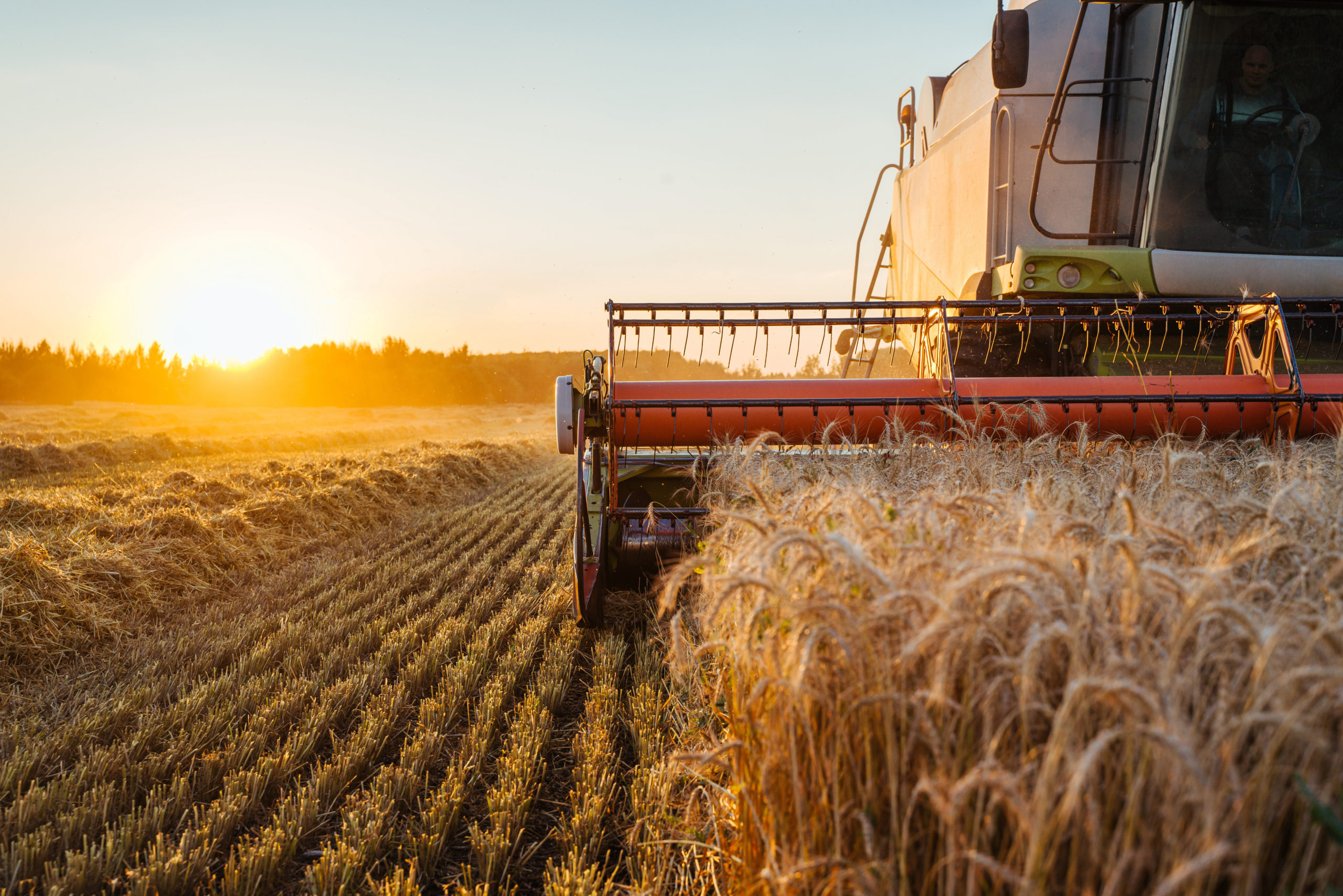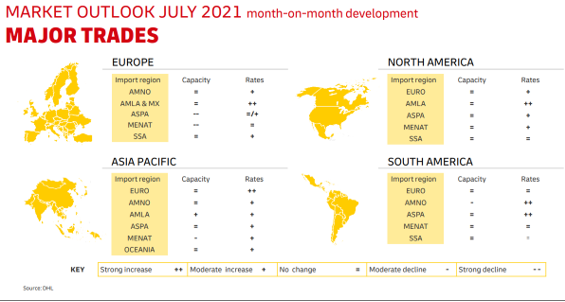Unprecedented levels of congestion are resulting in vessel delays that are absorbing needed capacity. Operational instability increases – it has been calculated that the current delays in vessel schedules are removing as much as 20-25% of the actual vessel capacity from the market. Daily rates from China to the U.S. West Coast are up 66% since January and more than 400% since the beginning of 2020, according to the Freightos Baltic Index. Spot rates from Asia to Northern Europe are up 92% and 480%, respectively, over the same periods.
The USA is experiencing extreme capacity issues affecting rail, trucking and chassis. The record number of inbound volume from various regions into the country are resulting in delays due to lack of rail cars, delays in delivering cargo as truckers are booked two to three weeks out and chassis are at a deficit. While the transportation delays emanate mainly from suppliers in Asia, manufacturers in Europe and North America are most affected by delivery delays. With consumer demand expected to grow at a rapid pace through 2021, transportation delays are likely to continue into 2022.
The US forecast of 2021 real GDP growth for 2021 has been revised up from 6.7% to 7.4%, and for 2022 from 4.7% to 4.8%. These increases were suggested by an upward revision in wages and salaries from the Q4 ‘20, strong recent high-frequency data on aggregate demand, the need to rebuild depleted inventories in H1 ‘21, progress of the vaccination campaign, and a quickening relaxation by states of pandemic-related activity restrictions. IHS Markit analysts estimate that real GDP surpassed its previous peak in May and employment will surpass its previous peak in mid-2022. An accelerated vaccination rollout has Canada leading high-population economies in first-dose vaccination rate per 100 population. As third-wave virus counts subside, regional reopening plans are on target or accelerating. This combined with a solid US economic outlook, has lifted the forecast of Canada’s real GDP forecast to 6.5% in 2021, 4.5% in 2022, and 2.1% in 2023.
In Latin America inflation continues to accelerate across the region, driven by steep increases in prices of food and energy. In Mexico and Brazil, current inflation rates exceed central bank targets. In countries where inflation is still relatively low—such as Peru, Chile, and Colombia—prices are rapidly accelerating. Besides relatively higher oil prices, Brazil is suffering from a severe drought and, as a result, water in hydroelectric power reservoirs is reaching low levels. This drought had prompted authorities to increase electricity tariffs as the plants require greater use of more expensive thermoelectric power. Local analysts call this the perfect storm for high inflation.



